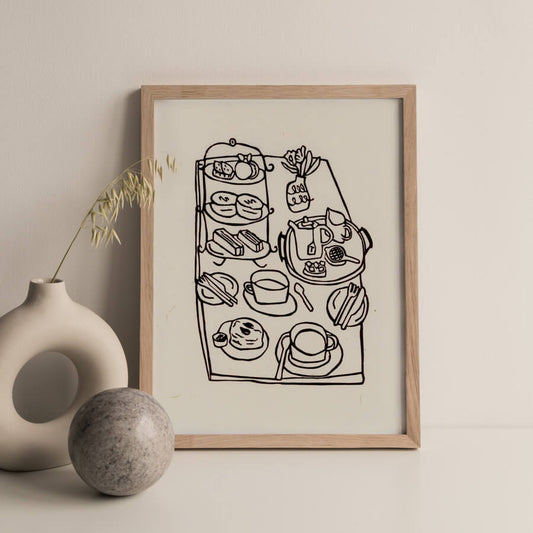You may have heard of linocut printing, and not sure what it is, or even how it should be a consideration in building up your art collection, well this little quick guide should help you with that. Linocut is an art medium and a form of relief printmaking. It is when a design is carefully carved into a sheet of linoleum using sharp specialised carving tools (Hence, lino - cut!). The lino is then inked up and pressed against paper with some pressure. The image that is transferred onto the paper forms the linocut print. The ‘pressing’ can be done by hand or with a printing press. Linocut prints are also known as lino prints or linoleum block prints.
A little more about the linocut printing
It can be quite an easy technique to pick up (it’s usually taught in junior school art classes), but as it is a very process driven art form, lots can go wrong too! Traditional linoleum is commonly used, which is made of compressed linseed oil and is fully compostable. This provides a smooth, even and sturdy surface for the printmaker to carefully carve the design. The areas carved away are the negative areas that will not be inked up - a mirror image of the final design, which takes a little getting used to initially! The lino is inked with a brayer, or roller, and then the paper is pressed against it with a bit of pressure to transfer the design. The simplest way to apply pressure is with your hands (I started off with a spoon!), whilst other printmakers can use professional printing presses. When the paper is pulled away, you have the print on the paper. The same lino block can be used again and again to print as many prints as you want. Because of the simple fundamentals of this process (carve, ink, press), the skills can be easily built upon to add more colours or more intricate details to the end design.
A quick history of linocut printing
Linoleum may have been something you have heard of before, but in a slightly different context - (think snazzy vintage retro floor coverings and wallpaper). In a very very brief history summary, Linoleum was first made by Frederick Walton, an English inventor, in 1855. What started off as floor coverings and then wall coverings, slowly turned to into a form of printmaking after experimentation by American and German artists in early twentieth century. Pablo Picasso and Henri Matisse (maybe you’ve heard of them?), have created masterpieces in linocut. Nowadays, it is a little known, but at the same time a popular printmaking art form, with both printmakers and collectors. There are many modern contemporary printmakers that continue to explore and experiment in this field of art and printmaking.
So, what’s so great about linocut prints?
Linocut prints are a great way to add some original artwork to your art collection. The average price varies a lot for linocut prints, but they are often much more affordable compared to other one off original artworks.
Because of the very nature of the process, each linocut print that is produced, is an handmade original artwork - it’s has not been mass produced. A printmaker has used their time and skill to design, carve, ink and carefully press onto paper the finished piece of artwork. No two linocut prints will ever be the same - there will be natural variations between each print, all a sign of it being completely handmade and unique.
So now you know a bit more about linocut printing, you can really appreciate all the work that has gone into making the linocut print. If you’re interested in adding original linocut prints to your art collection, definitely check out my quick guide for purchasing linocut prints.



